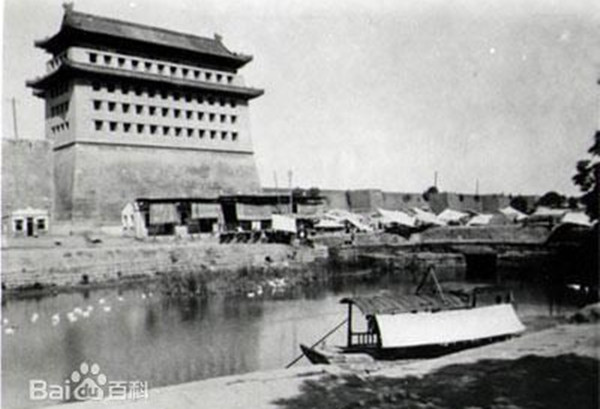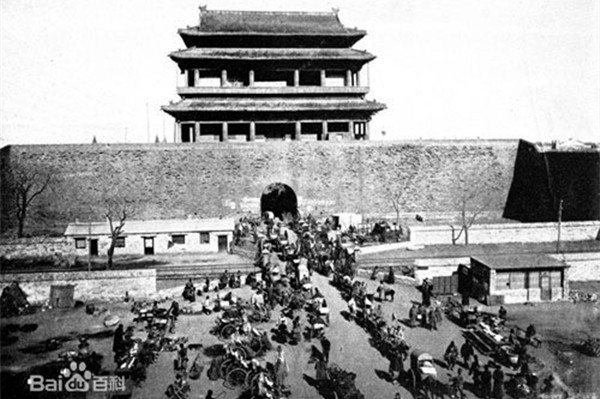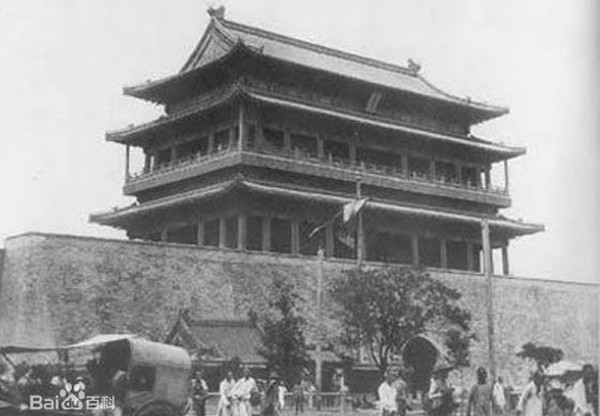The inner city of Beijing is also named “Jing Cheng (京城)” or “Da Cheng (大城)”. The eastern and western sections of it were mostly the city walls of the Yuan Dynasty’s capital, and the northern and southern sections of it were constructed in the reigns of Emperor Hongwu and Yongle (the latter was the son of the former but was the third emperor of the Ming Dynasty).
In the inner city there were nine gates, usually called “Nine Inner Cities”, which include Chaoyang Gate (朝阳门), Chongwen Gate (崇文门), Zhengyang Gate (正阳门), Xuanwu Gate (宣武门), Fucheng Gate (阜成门), Desheng Gate (德胜门), Anding Gate (安定门), Dongzhi Gate (东直门) and Xizhi Gate (西直门).
Visitors now traveling to Beijing will never meet most of these gates anymore, but going back to the past and experiencing the historical flavor of them must be something interesting. In addition, these city gates also took on very special historical missions mainly during the Ming and Qing Dynasties. It is these special missions that make them really famous and important for Beijing.
1.Chaoyang Gate

Chaoyang Gate was named Qihua Gate (齐化门) in the Yuan Dynasty. The nine barns in the inner city were once carried through this gate. Evey time the government filled the barns of the inner city, carts of different kinds went through this gates numerous times. In the past no trains, trucks or buses were available, grains from the south would be transported to today’s Tongzhou District (通州区) by river, and Tonghui River (通惠河: a canal in Beijing) played an important role during that time too. After these grains arrived in Tongzhou District, they would be carried to carts and transported to the inner city through Chaoyang Gate. At that time a flower pattern of a wheat ear was carved on top of it. As soon as these grains entered this gate, they would be stored in the nearby barns of the city.
2.Chongwen Gate

Chongwen Gate was named Wenming Gate in the Yuan Dynasty, usually called Hade Gate (哈德门) or Haidai Gate (海岱门). This gate was famous for the iron sea turtle in the renowned Zhenhai Temple (镇海寺). The tariffs at his gate were so high that businessmen from outside became afraid of passing through it. This gate also served as an entrance for carriages or carts which carried Chinese liquor or wine. At that time most liquors and wines were carried to Beijing from Hebei Province’s Zhuozhou and other places, and so they must enter Beijing from the south. Carriages or carts first went through Zuoan Gate (左安门) of the outer city and got tariffed at Chongwen Gate (崇文门). Liquor sellers of the Qing Dynasty must write “Liquors from the South (南路烧酒)” on their signboard, which means: My liquors have been tariffed and are not illegal. In the past days outside Chongwen Gate and to the northeast of it there was an iron sea turtle, which looked simple but was carefully carved. It is said under the bridge of this moat there was a sea eye (According to Chinese tradition, this eye is something from which the water of the sea can come), which might flood the city of Beijing. This turtle just served as a guard to protect Beijing.
3.Zhengyang Gate

Zhengyang Gate (正阳门) was named Lizheng Gate (丽正门) in the Yuan Dynasty, and Beijingers usually call it “Qianmen (前门)”. Since the sedan which carried the emperor passed through this gate, Zhengyang Gate was also called “National Gate”, which was only used by the emperor, who usually passed through this gate twice of each year. One was to worship the heaven in the Temple of Heaven; and the other was to till the field at Xianlong Altar (先农坛). On Feb 3, 1949 when the Chinese Liberation Army held their celebration of entering the city, they held it at this place.
The Nine Gates of Beijing (2)
The Nine Gates of Beijing (3)
Source: baike.baidu.com



